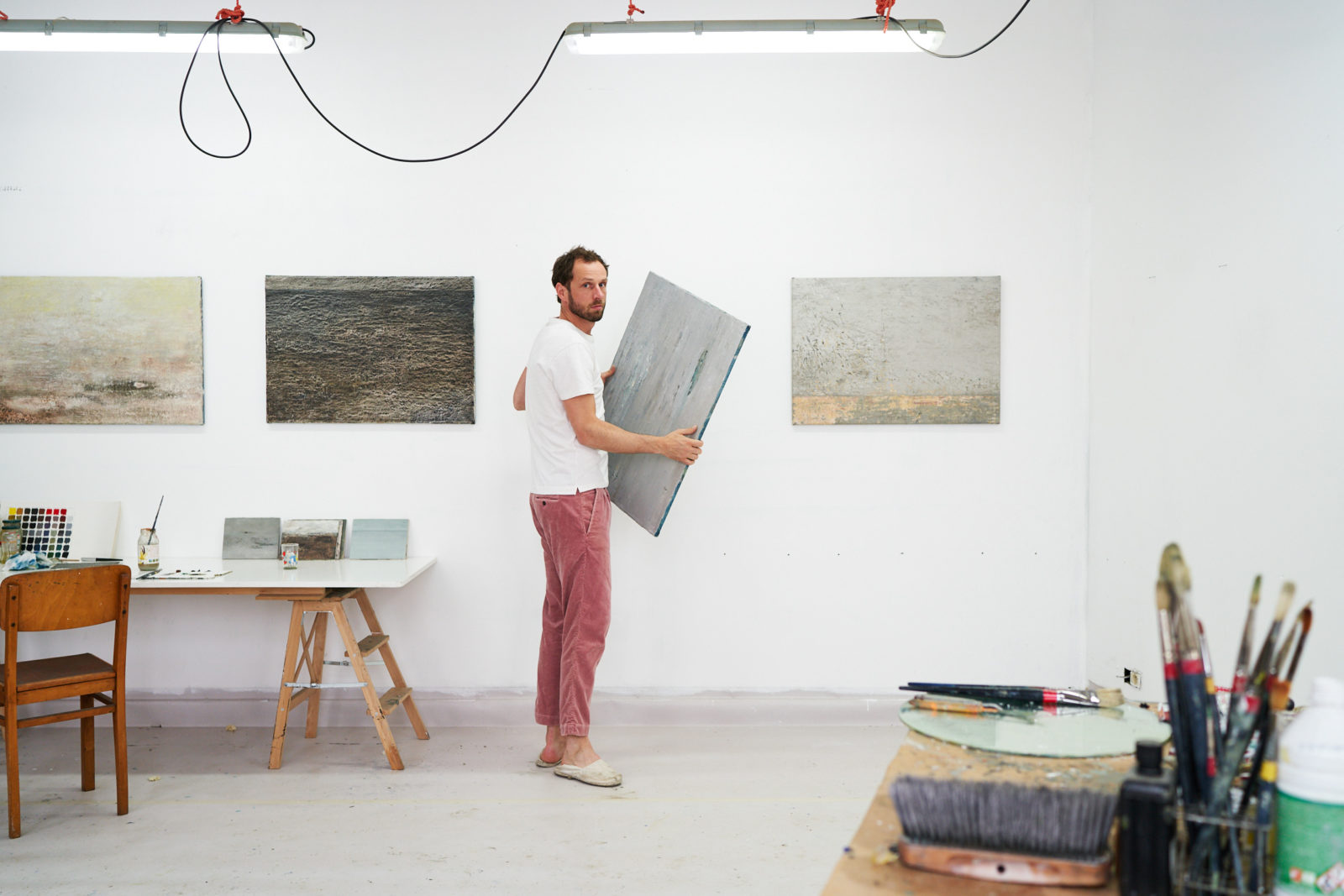For Nils Verkaeren, growing up in Belgium led to a feeling of entrapment, one which pushed him to look for experiences in remote places where he can immerse himself in nature.
Tucked away in one of the busiest streets in Antwerp, only five minutes away from the central station, we find the entrance of Nils Verkaeren’s apartment. Born and raised in Antwerp, Nils’ history-laden apartment is scattered with pictures and objects given to him by family and friends. A penchant for the past is also revealed through his work. He follows a long tradition of Belgian abstracts painters who use their observation of reality as a starting point for the creative process.
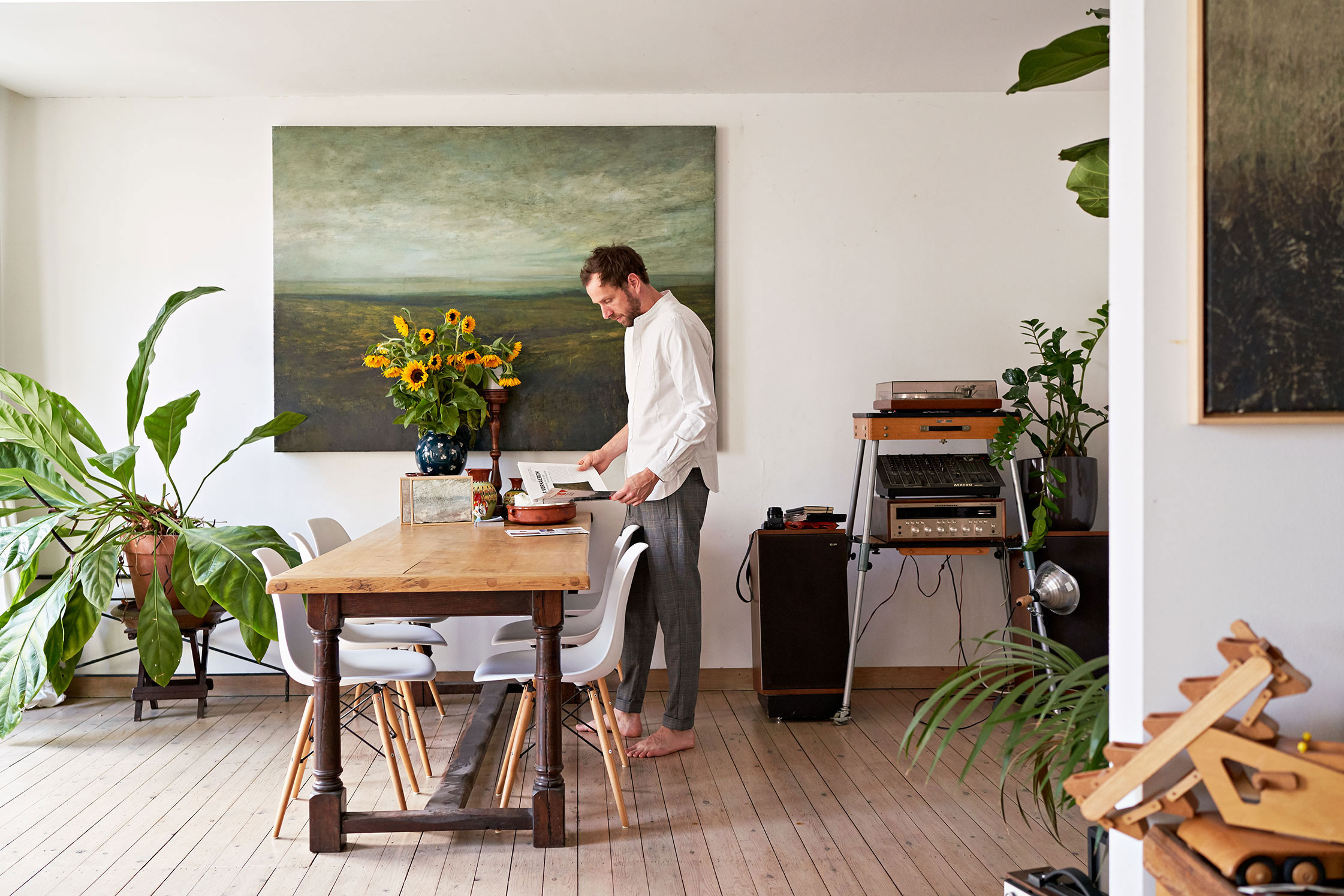
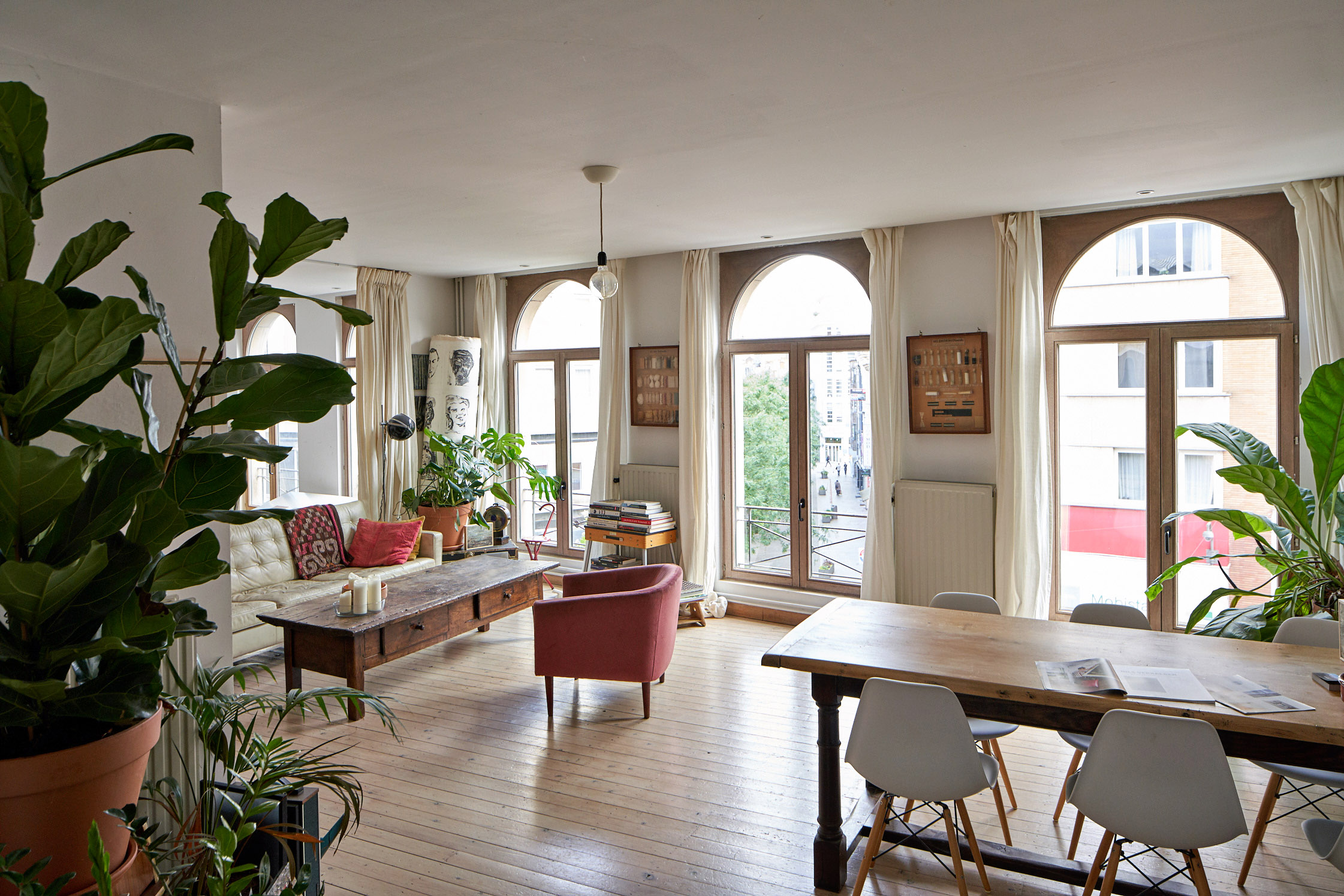
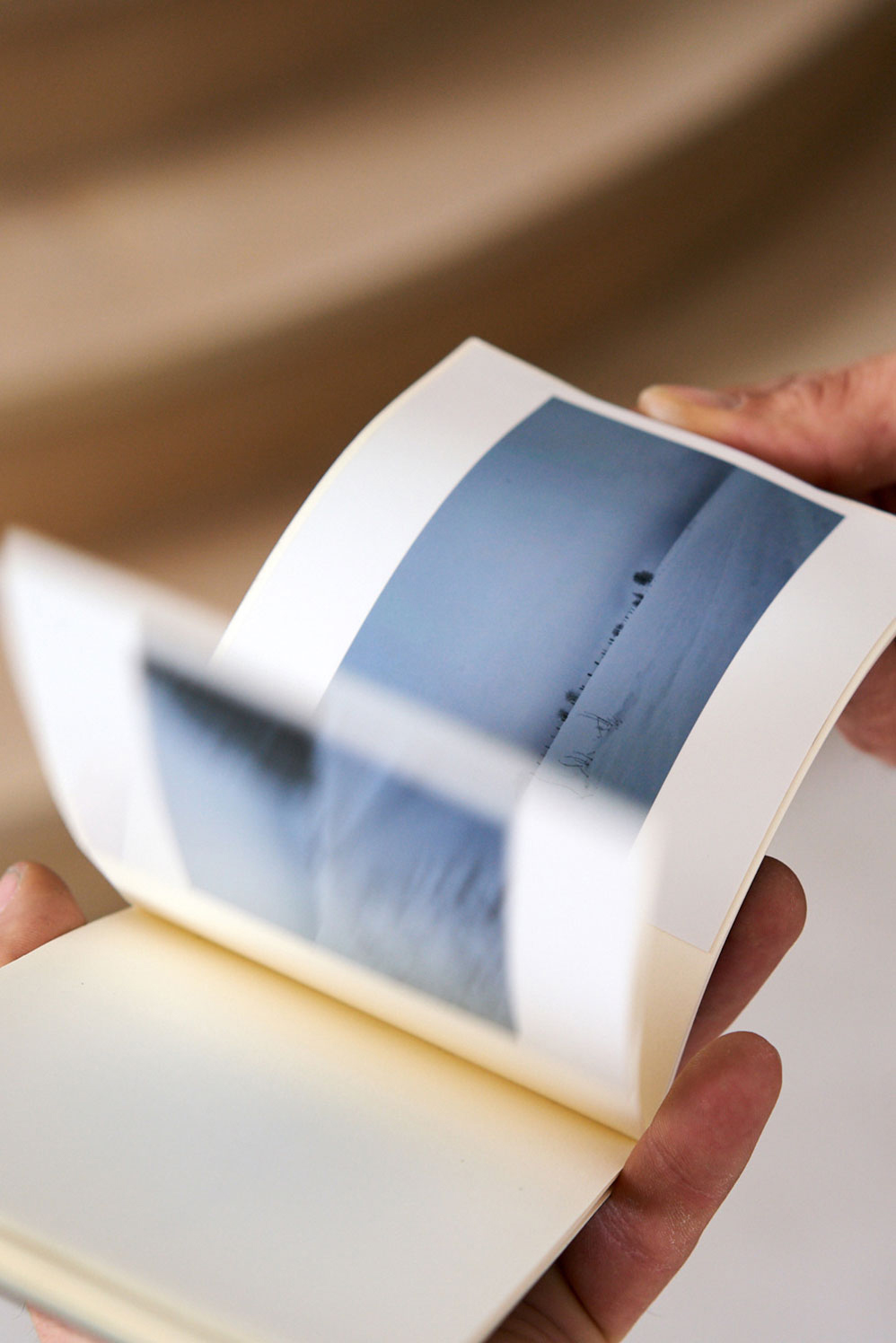
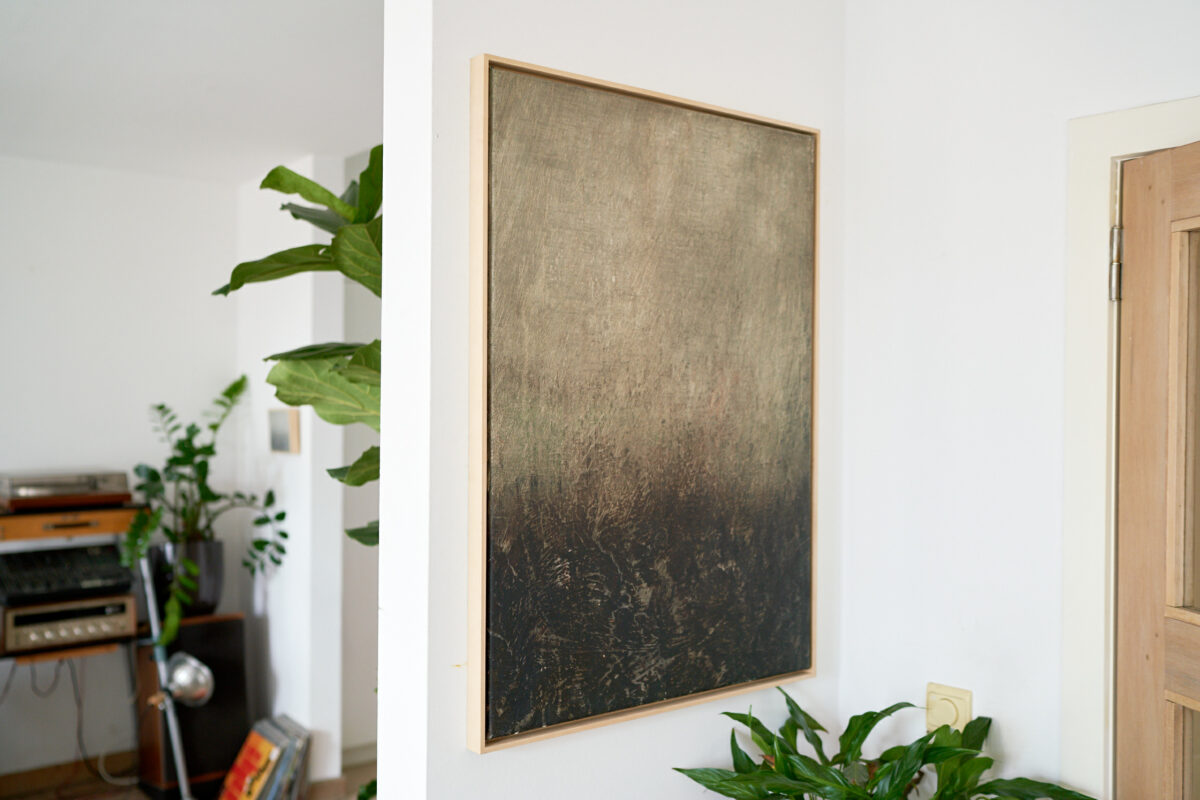
“In Belgium there are a lot of artists whose main theme is the landscape, it is because we miss the open space. The country is small and it feels packed.”
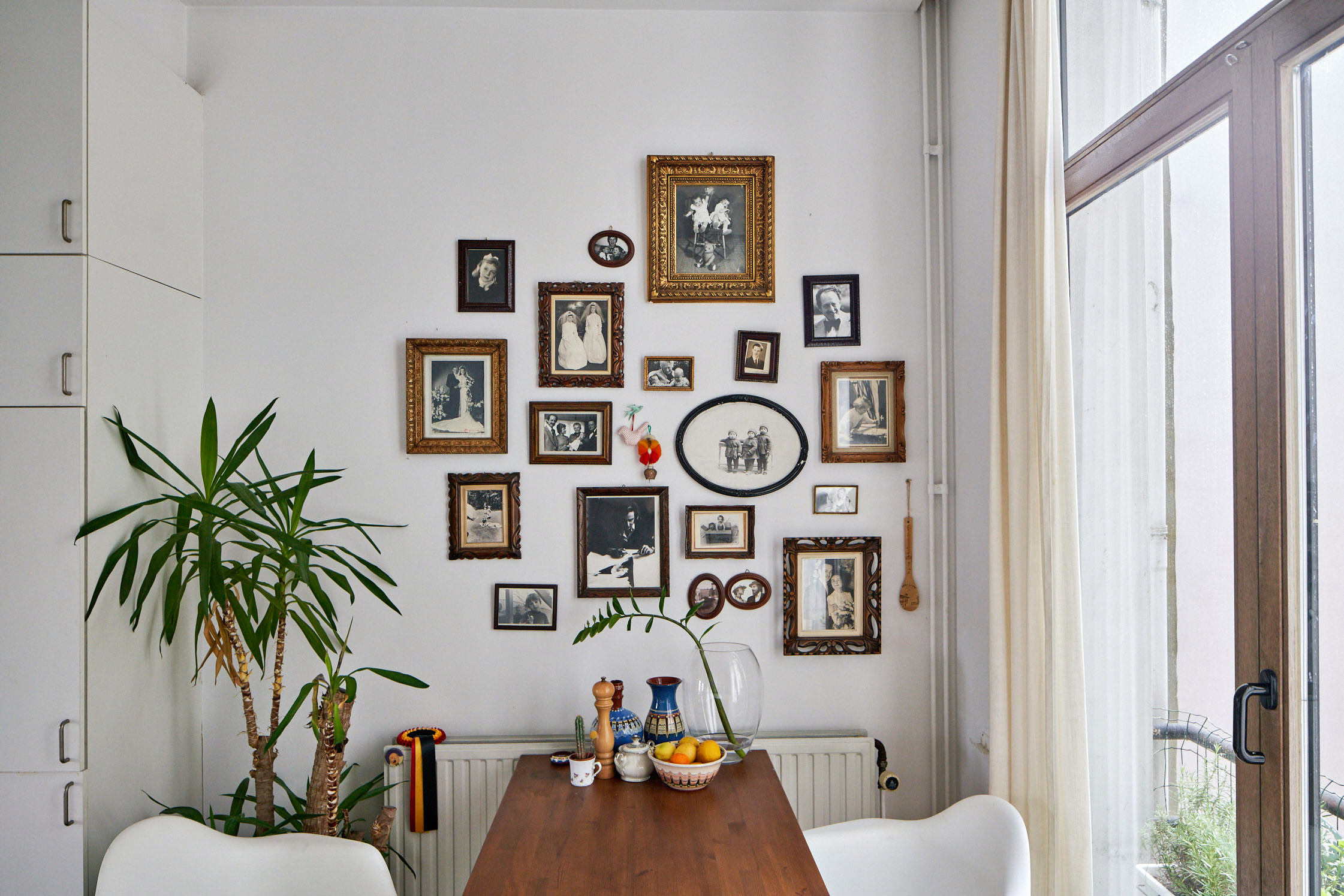
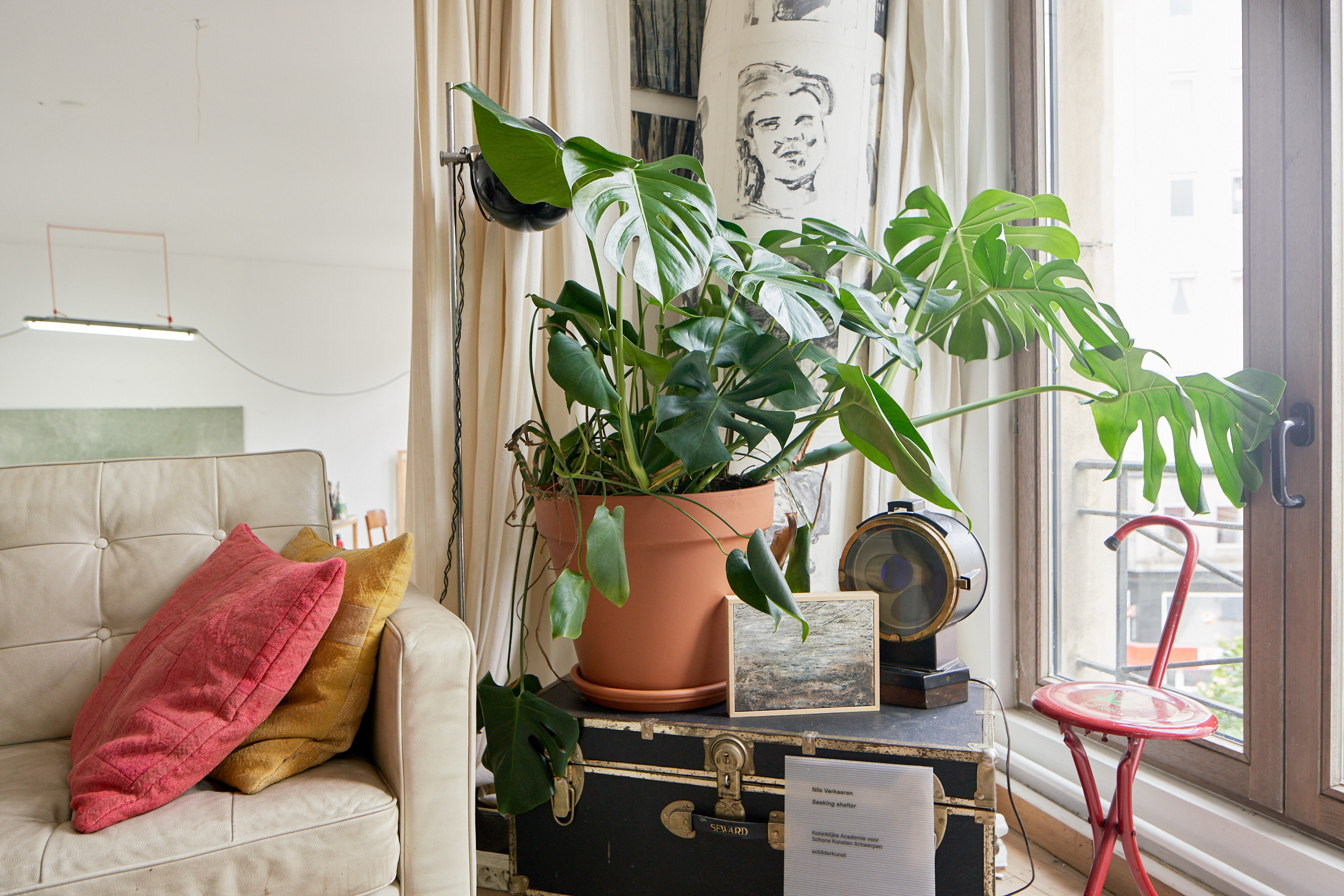
Nils’ flat is used as both his living space and atelier and the location is closely linked to his work. The inspiration for his paintings is drawn from nature and wild sceneries, but his work also emanates from a need to escape an increasingly interconnected world. “I’m very interested in exploring what loneliness and serendipity does to my work,” he says. Eight years ago he used to live south of the city where there were a lot of bars and it was easy to meet people that he knew in the street, but he wanted to avoid all that and moved away. Finding solitude in Antwerp can be challenging though. Belgium is, together with the Netherlands, the country with the highest density of population in Europe. “In Belgium there are a lot of artists whose main theme is the landscape, it is because we miss the open space. The country is small and it feels packed,’’ he says.
Landscape is an old genre in painting and Nils knows it’s very difficult to do something new. This search for alternative narratives has pushed him to travel around the world looking for extreme experiences. The trips he embarks on are part of his practice often shaping the line of work he will reflect upon the following year when he is back at his studio. His series 11937 km was the result of a 11937 km-long journey through Argentina. He traveled around the country with a van painting on site, often under severe weather conditions. He moved fast, changing locations without giving the paintings enough time to dry. This summer, in Bogota, he wants to do the opposite, remaining in one secluded place for a couple of months with no access to the internet.
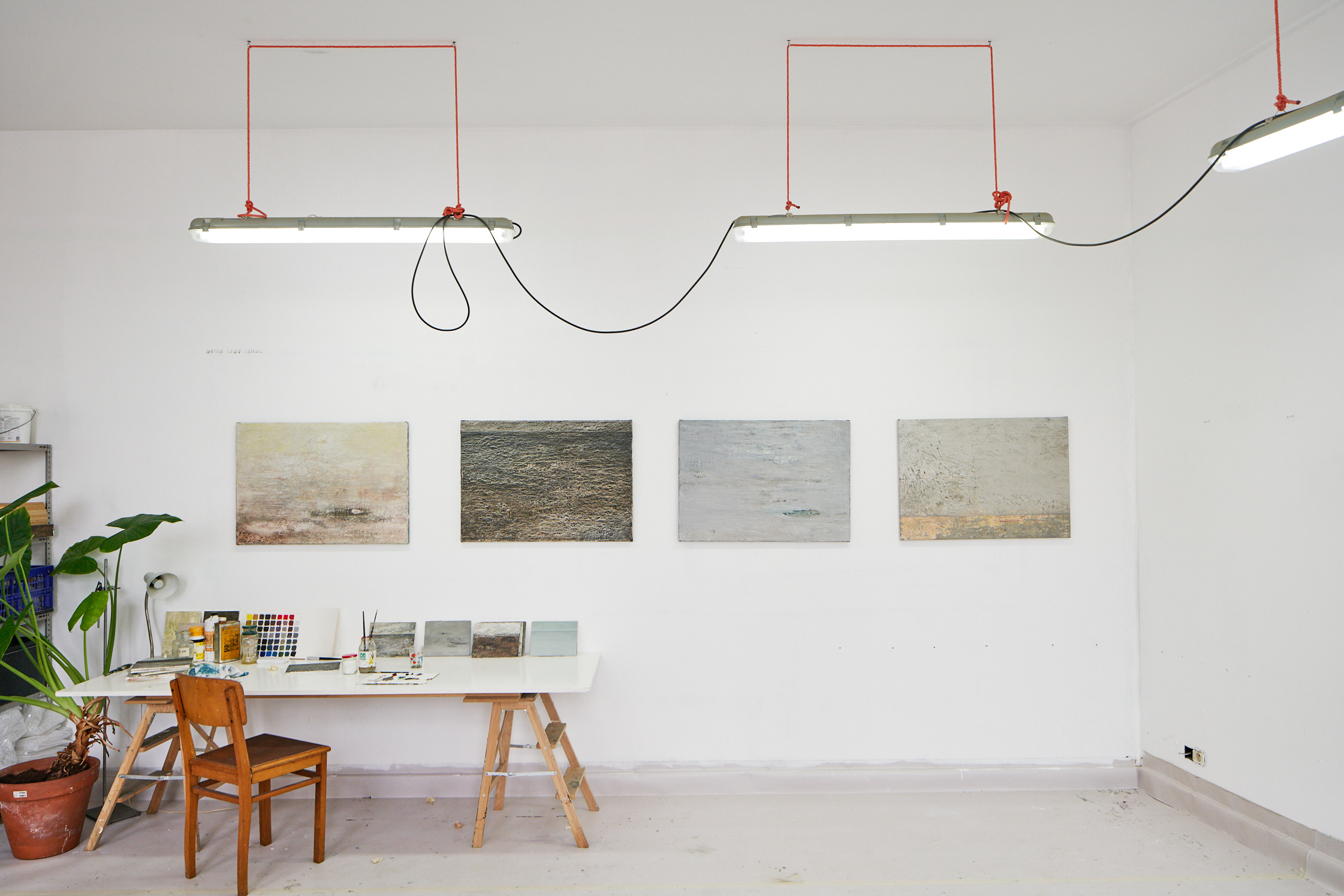
“I don’t think art should judge, I like to suggest instead ideas or dreams. Political art tends to be very literal, I don’t like to point fingers.”
Nils’ train of thought rambles enthusiastically in all directions. He gushes about his upcoming trip to Colombia then jumps to Mongolia and back to Argentina. He is hyperactive and he admits that part of his fascination with nature is therapeutic; looking at the horizon calms him down. He tries to share this fascination with the public and engage people through his paintings to make them realize the healing power of nature. Thus, he is an environmental activist but he says, “I don’t think art should judge, I like to suggest instead ideas or dreams. Political art tends to be very literal, I don’t like to point fingers.” His visual aesthetic has evolved from a realistic representation of landscapes to abstract paintings where capturing the feelings that nature evokes through layers and textures is placed at the centre of the intention. Sometimes these landscapes are painted on site and others in the studio where Nils re-enacts the experience of contemplation through memories. When asked about his influences he mentions his peers who visit him regularly at the studio. But he sees his practice as a collage of elements borrowed from different sources like the raindrops of Claude Lorrain and the atmospheres of Thierry de Cordier.
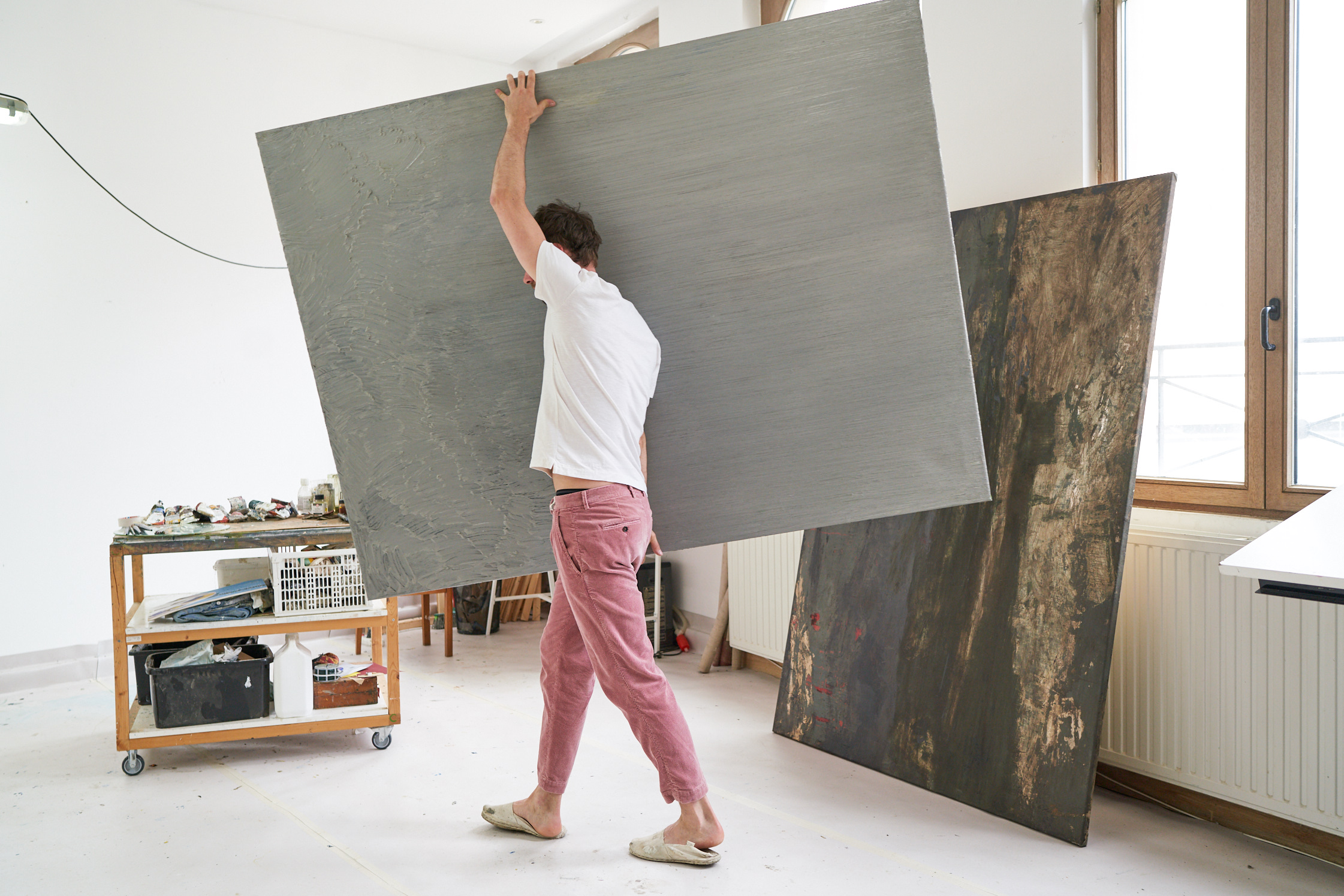
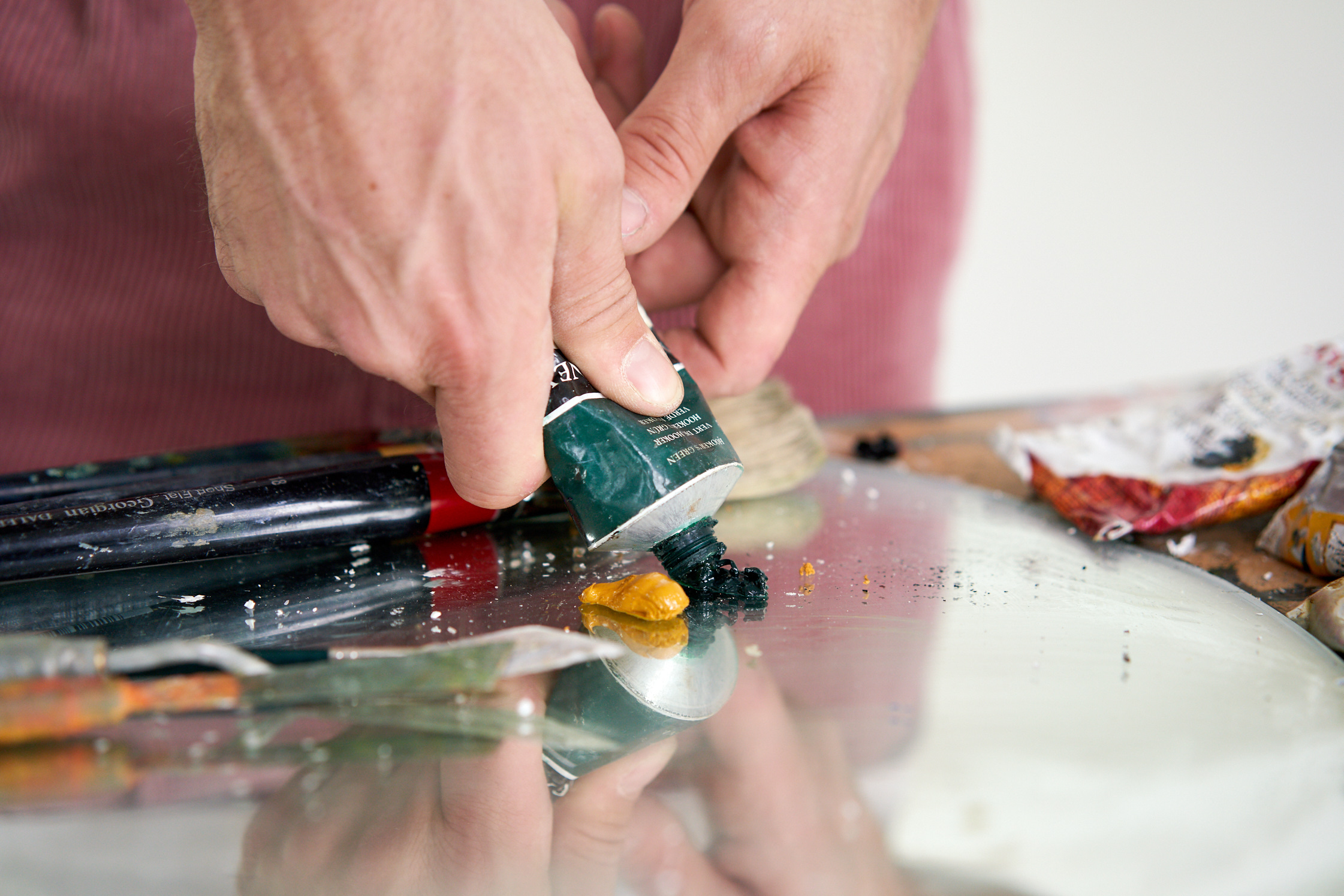
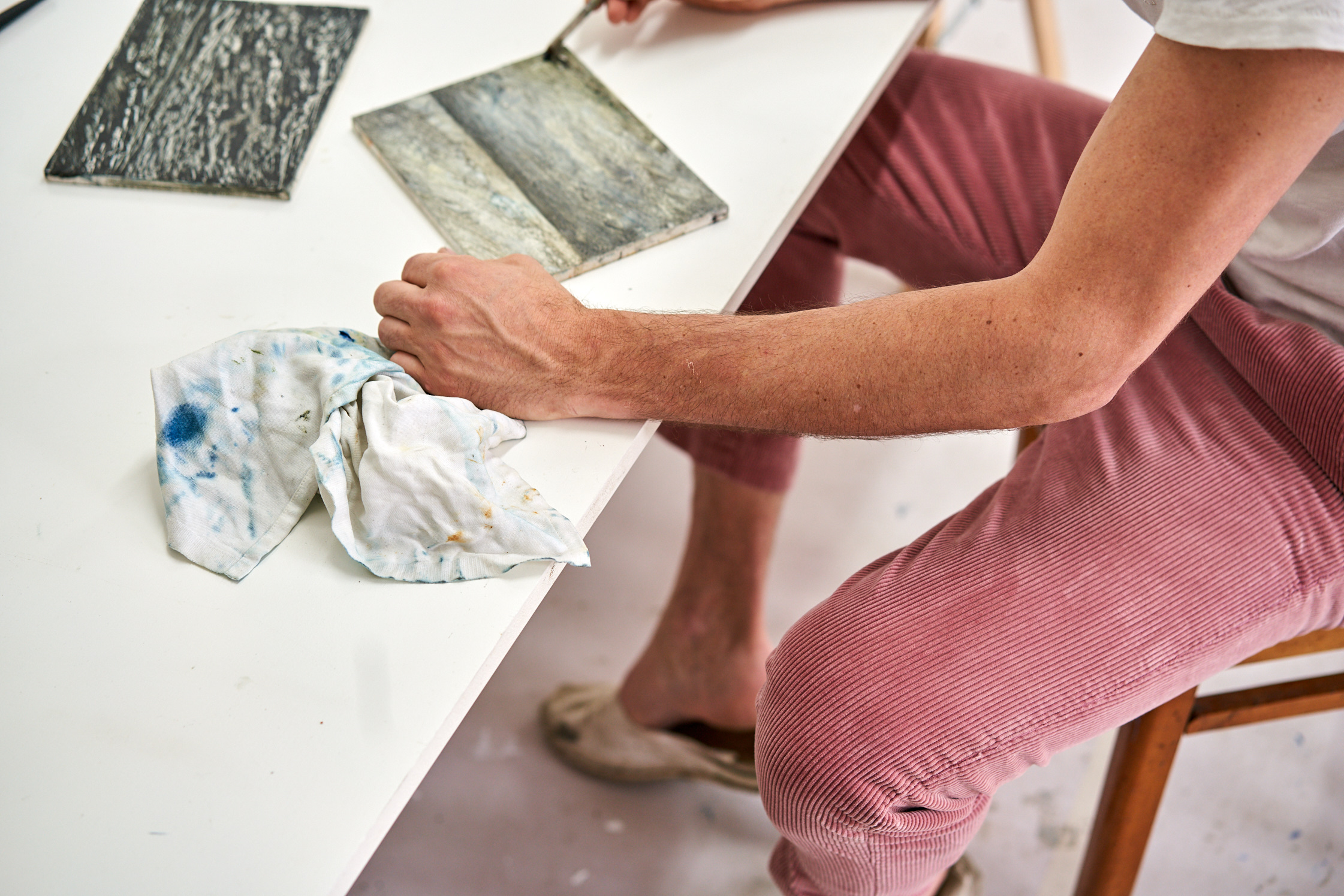
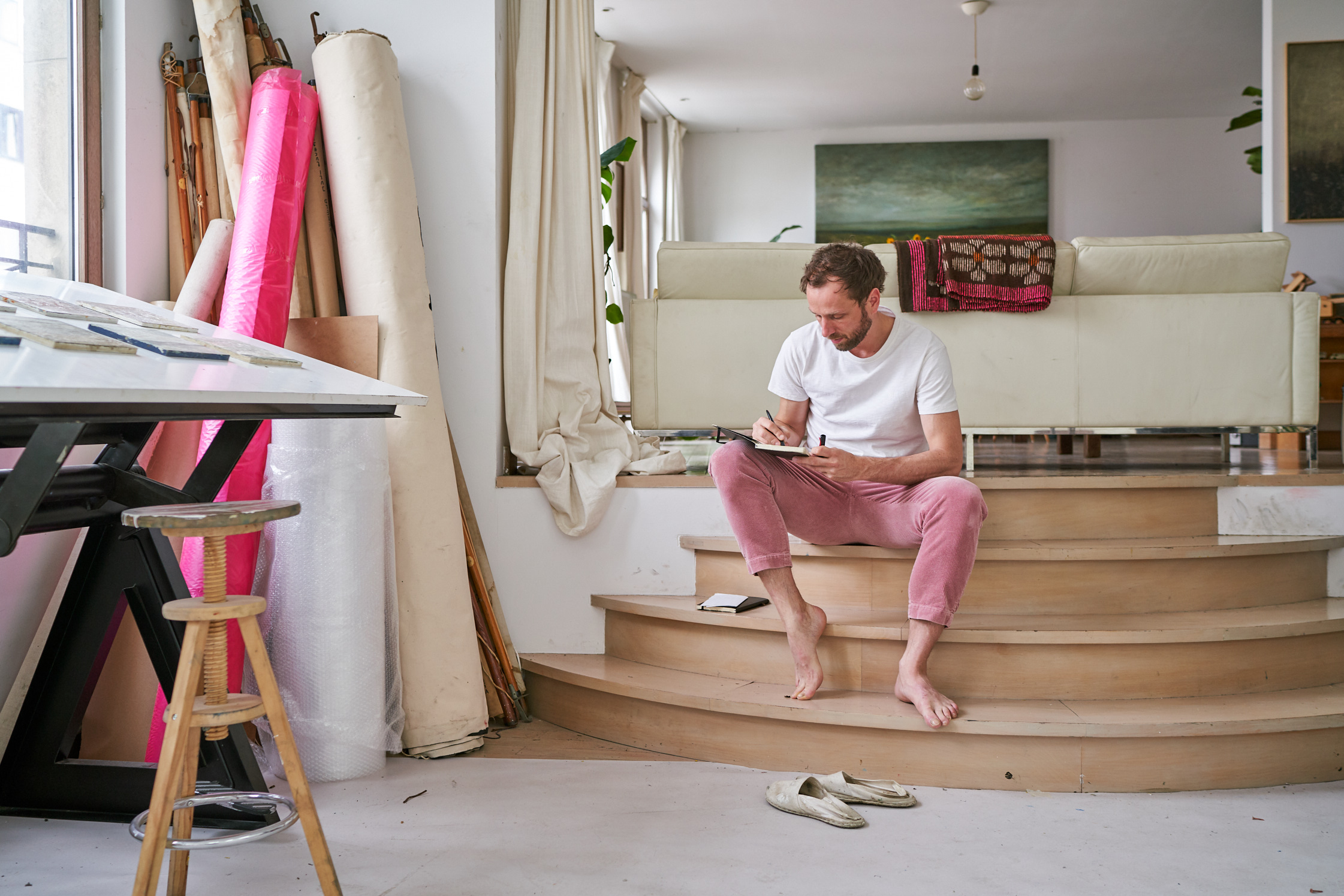
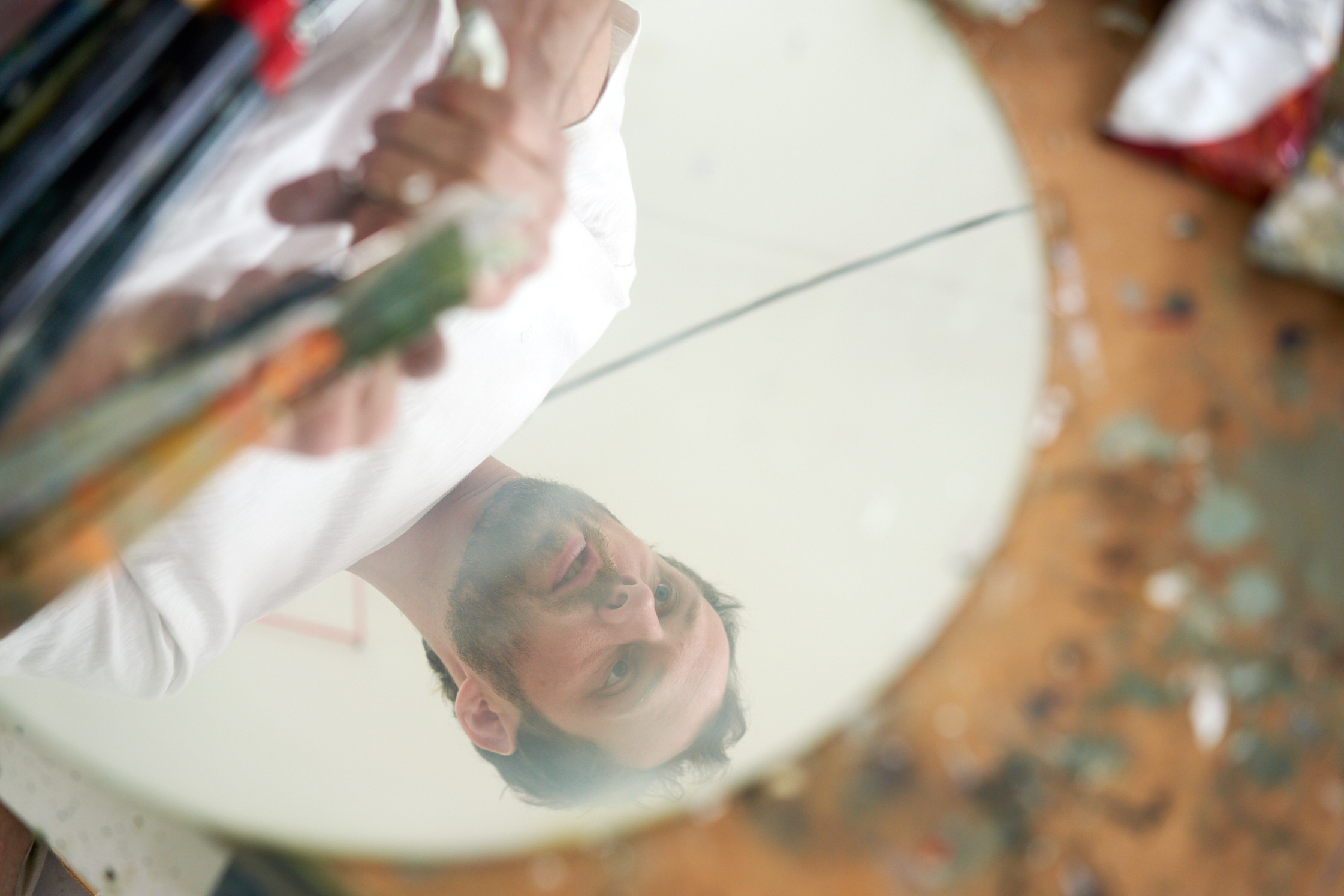
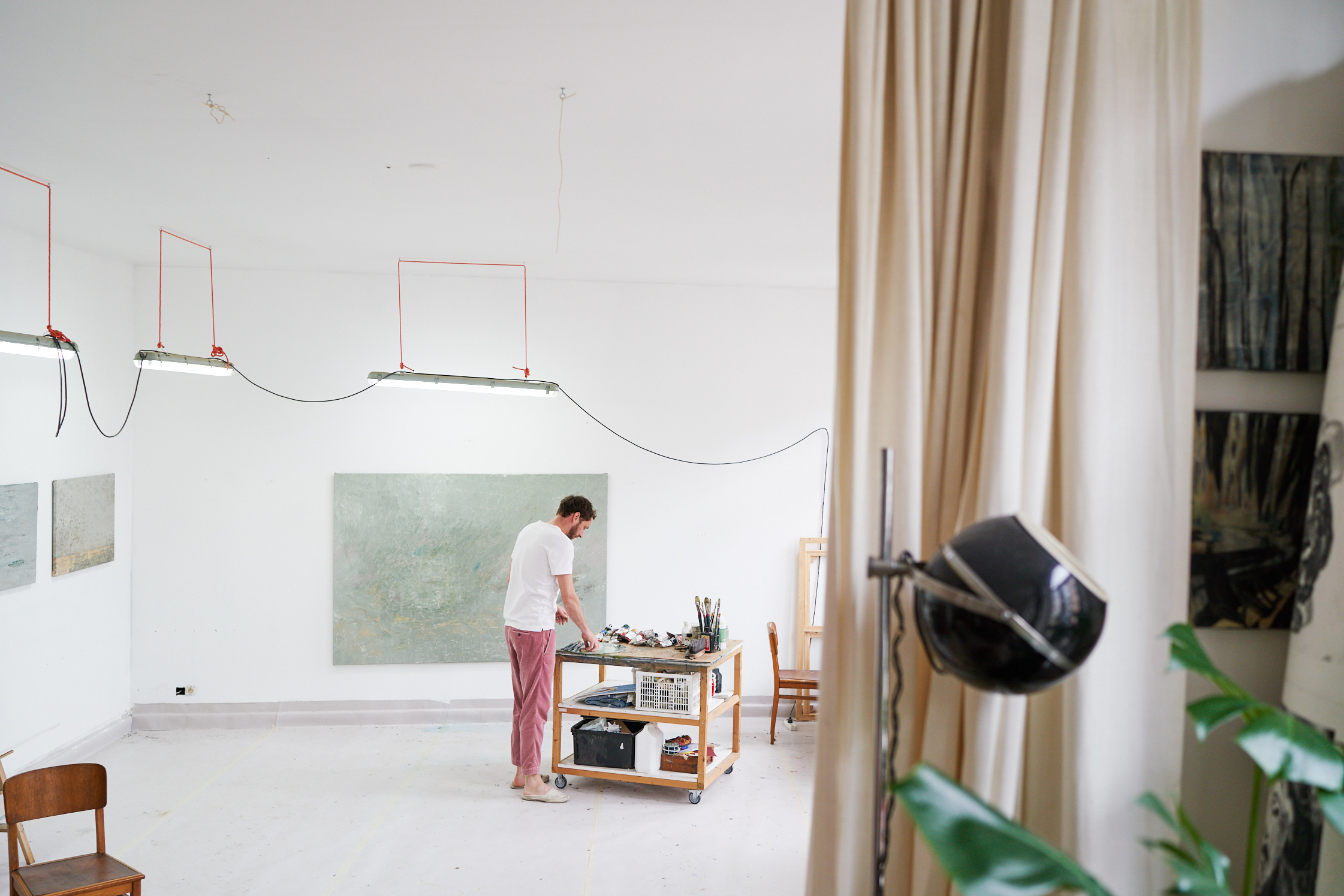
“I’m very interested in exploring what loneliness and serendipity does to my work.”
For his final thesis at the Royal Academy of Arts, where he studied painting, Nils explored how landscape artists were influenced by their upbringing. An idea that probably originated in his personal experience since it was during his childhood, while going on family hiking trips abroad, that he discovered the allure of the outdoors. “I had this little easel that I used to bring on holidays to do watercolors. I felt like Cezanne, I loved it,” he explains. Both his parents are graphic designers and from an early age he was encouraged to pursue his creative inclinations. Enrolling in the Royal Academy was a logical decision, he was very keen on learning the techniques. “When I studied you had to wait until third year to do nudes, now in third year is all free work…You have to learn the language and only then you can go as crazy as you want”.
For Nils, travel is never far from his mind. He is planning a zero waste trip traveling in Mongolia for a year with nomads, carrying a yurt with him at all times that will serve as a canvas. He would like to work with locally sourced materials like flowers or even blood. He picked Mongolia because of the flatness of the country that will allow him to continue working on the same painting even if he changes location. Nothing is settled, especially now that he is teaching at the Royal Academy and he is not as flexible as he used to be. He knows that plans are always susceptible to change, “between the dream and the act of doing is a world of practical possibilities,” he says. Tourism worldwide has grown considerably in the last couple of years and it’s becoming more difficult to find lost paradises. Nils seems to gravitate to remote and desolate locations where not only he can be lost in translation but he can also admire the respect that people have for the landscape “because they can see how brutal it is.”
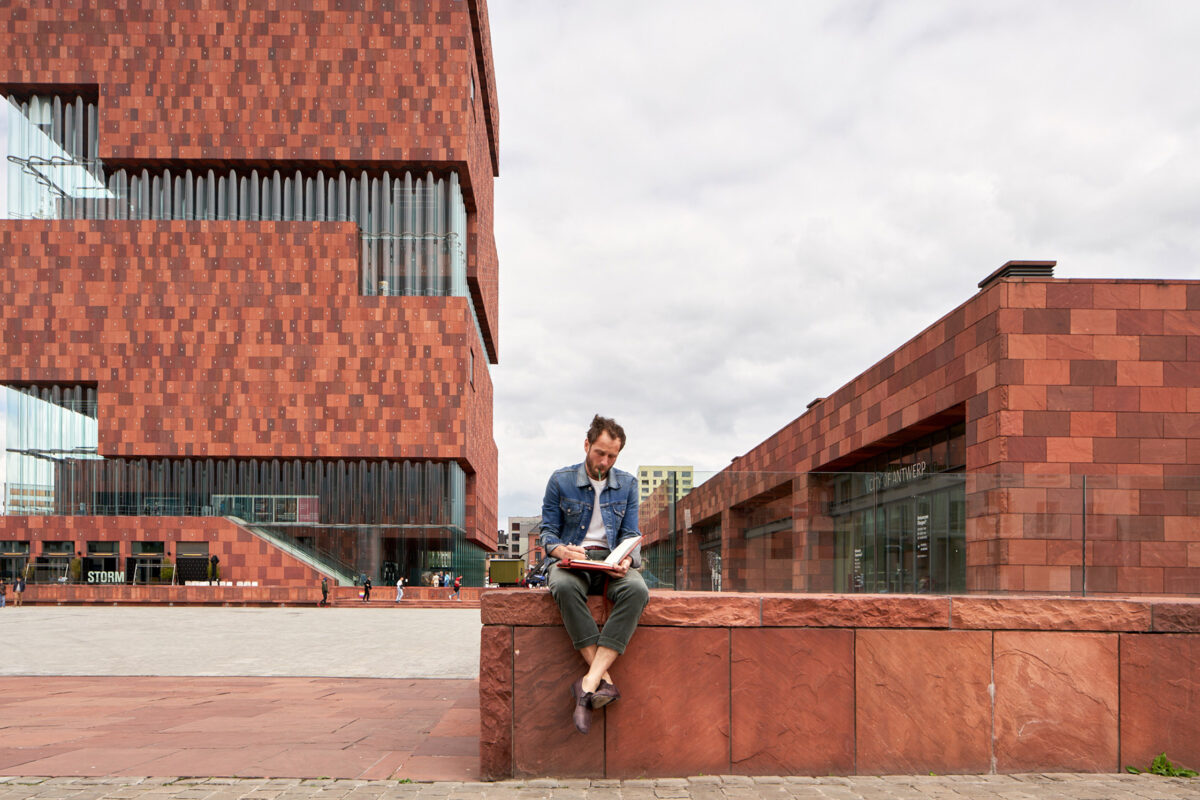
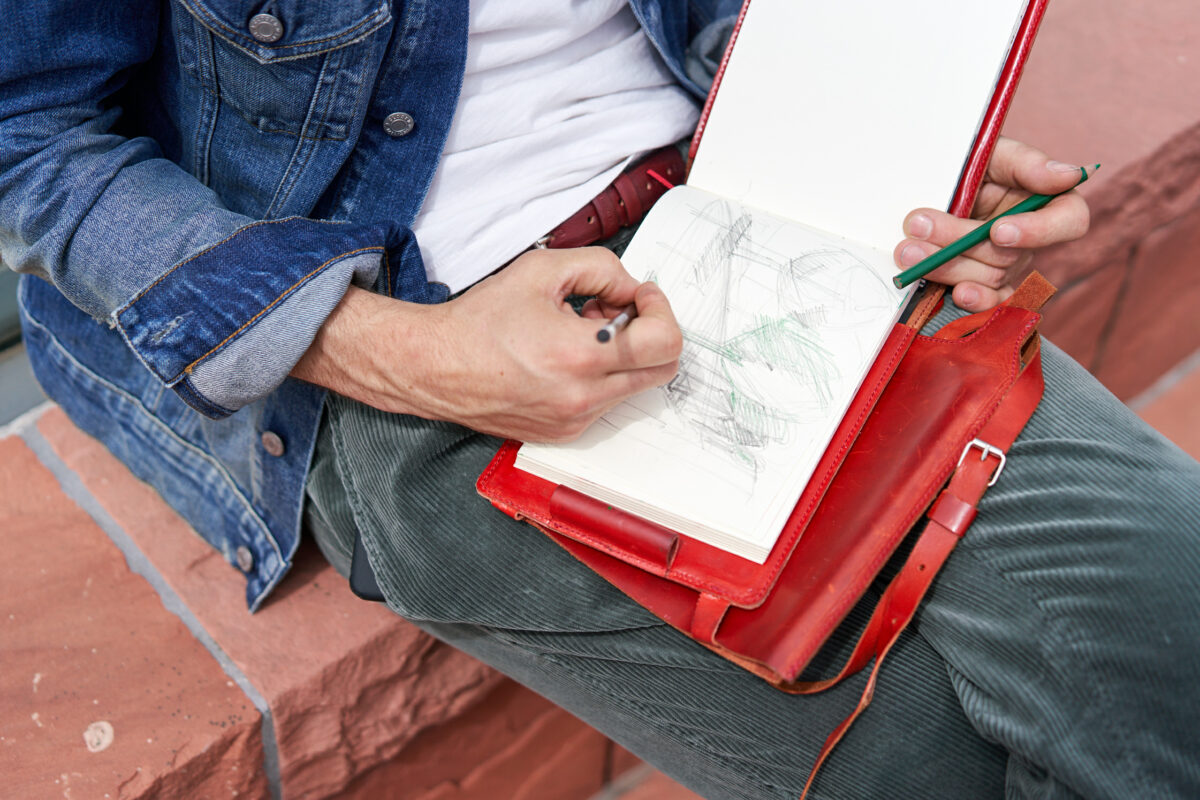
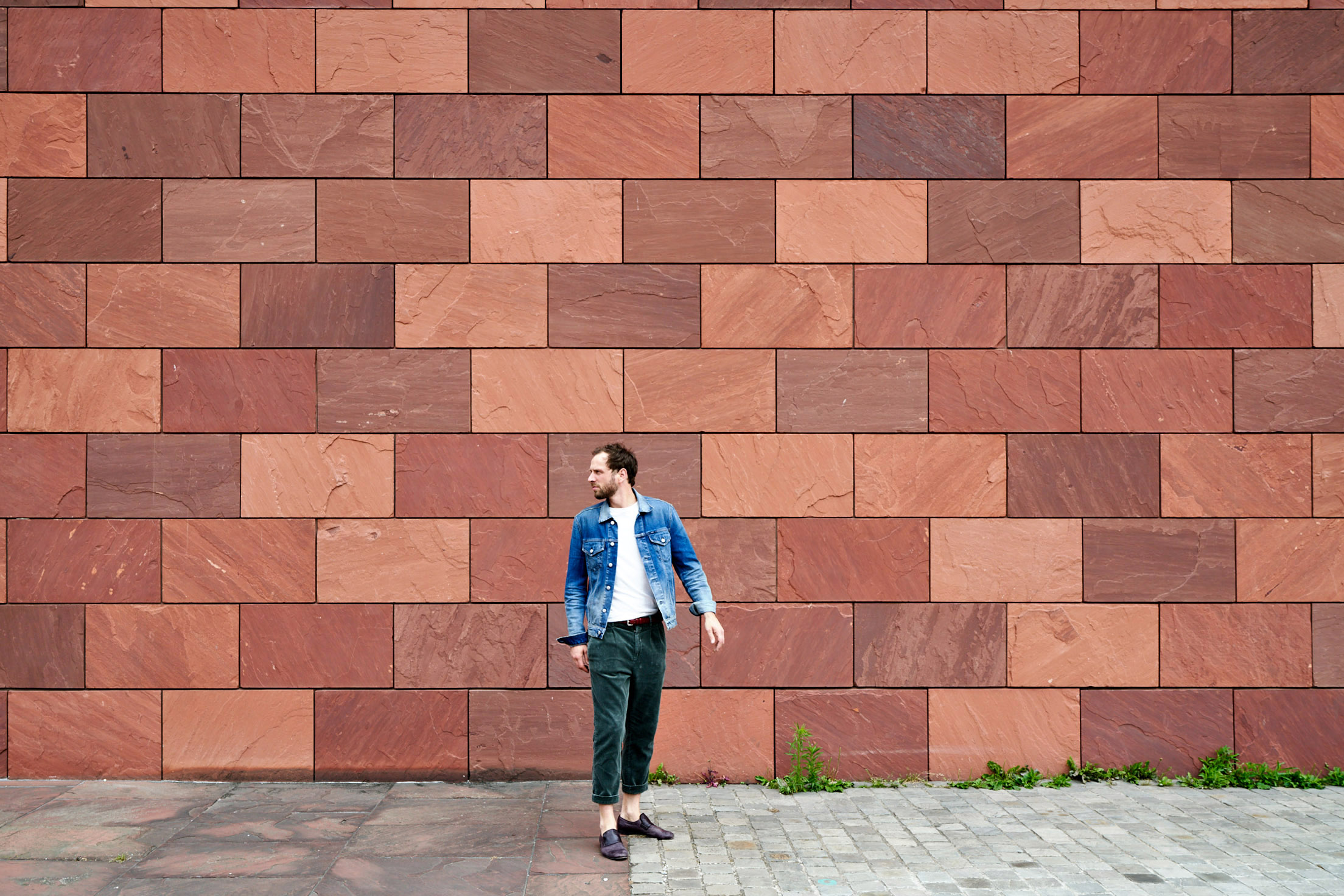
Landscape painter Nils Verkaeren is driven by his restless nature and a desire to seek out remote surroundings outside the city. With each journey he explores what loneliness and serendipity do to his work. Follow him on Instagram to learn more about his current and upcoming projects.
This portrait belongs to the interview series Men in Closed, the latest iteration of our content collaboration with German fashion label Closed, that highlights the lives and achievements of international creative tastemakers.
Text: Diana del Olmo
Photography: Jordi Huisman
